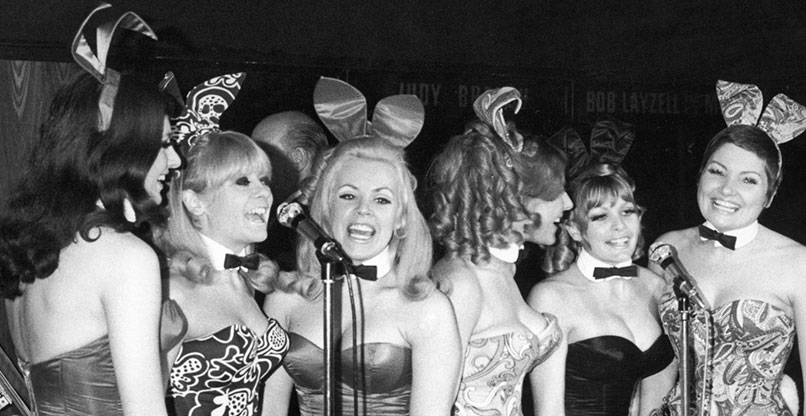Walter J. Meyer III, M.D.,1,2 Jordan W. Finkelstein, M.D.1,2 Charles A. Stuart, M.D.,3 Alice Webb, M.S.W.,2 Edward R. Smith, Ph.D.,4 Andrew F. Payer, Ph.D.,5 and Paul A. Walker, Ph.D.1,2
The optimal hormonal therapy for transsexual patients is not known. The physical and hormonal characteristics of 38 noncastrate male-to-female transsexuals and 14 noncastrate female-to-male transsexuals have been measured before and/or during therapy with various forms and dosages of hormonal therapy. All patients were hormonally and physically normal prior to therapy. Ethinyl estradiol was superior to conjugated estrogen in suppression of testosterone and gonadotropins but equal in effecting breast growth. The changes in physical and hormonal characteristics were the same for 0.1 mg/d and 0.5 mg/d of ethinyl estradiol. The female-to-male transsexuals were well managed with a dose of intramuscular testosterone cypionate of 400 mg/month, usually given 200 mg every two weeks. The maximal clitoral length reached was usually 4 cm. Higher doses of testosterone did not further increase clitoral length or suppression of gonadotropins; lower doses did not suppress the gonadotropins. Based on the information found in this study, we recommend 0.1 mg/d of ethinyl estradiol for the noncastrate male-to-female transsexual and 200 mg of intramuscular testosterone cypionate every two weeks for the noncastrate female-to-male transsexual.
INTRODUCTION
Although the hormonal and physical characteristics of patients seeking treatment for transsexuality have been a subject of debate for more than 12 years, the abnormalities reported have been, generally, of minor significance (Dorner et al., 1976; Hamilton and Chapman, 1977; Jones and Samimy, 1973; Meyer-Bahlburg, 1977, 1979; Migeon et al., 1968; Sipova and Starka, 1977; Starka et al., 1975). The hormonal treatment of these patients before gonadectomy has been based on estimates derived from the physiological doses of hormones used for adults who lack gonadal function and require replacement therapy (Benjamin, 1966; Hamburger, 1969; Migeon, 1969; Money and Walker, 1977). This study compares various forms and dosages of hormonal therapy used in treatment of noncastrate transsexuals. Physical changes were measured, as well as the concentration of hormones, in patients undergoing hormonal treatment. The goal of this report is to point the way for more rational and standardized hormonal treatment of transsexual patients of both sexes.
METHODS
During the first 21/2 years after it was founded, the Gender Clinic at The University of Texas Medical Branch at Galveston evaluated 52 nongonadectomized transsexual patients on at least one occasion (38 male-to-female transsexuals, ranging in age from 16 to 62 years, and 14 female-to-male transsexuals, ranging from 21 to 55). Patients with the adrenogenital syndrome, XO/XY mosaicism or other congenital endocrine problems were excluded from this study. A total of 136 evaluations was done (98 for the male-to-female transsexuals, and 38 for the female-to-male transsexuals). During a typical evaluation, the patient had a complete physical examination and an appropriate hormonal evaluation. These evaluations were performed both at the time of initial registration with the Gender Clinic and after each interval (at least 3 months) during which the patient had received a prescribed hormonal regimen. The nine male-to-female transsexuals who had not been treated previously were given various dosages of conjugated estrogen as initial therapy. Those who had been treated previously (for periods ranging from 1 1/2 to 16 years) were given either conjugated estrogen or ethinyl estradiol. The dose of conjugated estrogen (usually Premarin) ranged from 1.25 to 5.0 mg/day, and the dosage of ethinyl estradiol from 0.1 to 0.5 mg/day. The patients who were receiving ethinyl estradiol or conjugated estrogen at the time of their initial visit were usually continued at the same dosage, if it was within the above mentioned range, or were given a reduced dosage of the same medication. Patients who were receiving other forms of estrogen were divided arbitrarily and randomly into two treatment groups: one received conjugated estrogen, the other ethinyl estradiol. In addition to estrogen therapy, medroxyprogesterone was being taken by approximately 25% of the patients during the time they were studied. For 90% of those observation periods, the dose was 10 mg/day; for the remainder, the dose was 20 mg/day. Nine of the 14 female-to-male transsexuals had not been previously treated. All the female-to-male transsexuals were treated with testosterone cypionate(Depotestosterone), ranging in dosage from 100 mg/month to 200 mg/week. The testosterone cypionate was usually started at a dosage of 200 mg/month and increased every 3 months in a stepwise fashion by decreasing the interval between doses of medication until luteinizing hormone (LH) and follicle-stimulating hormone (FSH) were suppressed into the prepubertal range.
1Gender Clinic and Department of Pediatrics, The University of Texas Medical Branch at Galveston, Galveston, Texas 77550. 2Gender Clinic and Departments of Psychiatry and Behavioral Sciences, The University of Texas Medical Branch at Galveston, Galveston, Texas 77550. 3Gender Clinic and Department of Internal Medicine, The University of Texas Medical Branch at Galveston, Galveston, Texas 77550. 4Gender Clinic and Department of Obstetrics and Gynecology, The University of Texas Medical Branch at Galveston, Galveston, Texas 77550. 5Gender Clinic and Department of Anatomy. The University of Texas Medical Branch at Galveston, Galveston, Texas 77550.
Every 3 months, each patient received a complete physical examination, including measurement of genitalia and breasts. The breasts were measured with a flexible steel tape measure, with the patient in a supine position. The maximal breast tissue hemicircumference, crossing over the middle of the nipple, was recorded. The stretched clitoral or penile length, not including the foreskin or clitoral hood skin, was recorded in centimeters (Schonfeld, 1943). The testicular volumes were measured by comparing to Prader testicular models (Zachmann et al., 1974). At the time of each physical examination, single blood samples for hormone measurement were obtained at some time between 9 A.M. and 5 P.M. The plasma testosterone and androstenedione were measured by radioimmunoassay after separation by LH-20 chromatography (Akesode et al., 1977). Estradiol was measured by radioimmunoassay (Lindner et al., 1972). LH and FSH were also measured by radioimmunoassay compared to second IRP-HMG standard (Johanson et al., 1969; Raiti et al., 1969). Data are reported for a given dosage of hormone medication only when at least two observations had been made for that dosage. Therefore, it was possible to calculate a standard error of the mean (SEM) for each type of observation taken during the physical and hormonal examination.
RESULTS
Male-to-Female Transsexuals
Nine male-to-female transsexuals were evaluated before any treatment with hormones, either prescribed by a physician or obtained “off the street.” The physical findings were normal: Tanner stage 5 pubic hair, testicular volume of 15 to 25 ml (mean SEM = 23.5 1.1 ml), no gynecomastia, and stretched penis length of 11 to 18 cm (mean SEM = 14.6 0.8 cm). Results of hormonal evaluation were also normal: plasma testosterone, mean SEM = 978 86 ng/dl, range 558-1391 ng/dl; androstenedione, mean SEM = 181 61 ng/dl, range 79-289 ng/dl; LH, mean SEM = 5.5 1.0 mlU/ml, range 1.6 11 mlU/ml; and FSH, mean SEM = 7.8 1.5 mlU/ml, range 1.9-18 mlU/ml (Table I). The physical examinations of the nine patients who had received hormonal medication previously but were not receiving it at the time of evaluation showed very similar physical and hormonal characteristics except they did have some breast enlargement (breast hemicircumference mean SEM = 5.8 2.3 cm, range 0-13 cm) and some reduction of testicular size – to a mean SEM = 19.2 2.5 ml, range 10-30 cm3 (Table I). Although many of the patients reported weight gain with estrogen therapy, such gains could not be verified statistically in this study. Subjectively, the examiners and patients usually observed a redistribution of weight into the breasts and hips and away from muscle. Table I compares the physical and hormonal changes induced by various dosages of either ethinyl estradiol or conjugated estrogen in male transsexuals who had received therapy before entering the study. The breast hemicircumference increased in all patients who took estrogen (Table I). Patients who had taken medication before entering the study had more breast development than those who had taken no previous medication, regardless of the dosage of conjugated estrogen taken during the study. The higher the dosage of estrogen of either type, the more breast development occurred. There was no plateau effect, and 0.5 mg of ethinyl estradiol seemed to have the same effect as 5.0 mg of conjugated estrogen. No statistical effect could be shown on stretched penis length (mean SEM = 13.7 0.7 cm) for patients receiving 0.5 mg of ethinyl estradiol or 5.0 mg of conjugated estrogen. Changes in body hair were impossible to assess because so many patients had used electrolysis. Testicular volume was reduced by approximately 50% after dosages of greater than 2.5 mg of conjugated estrogen or 0.1 mg of ethinyl estradiol (Table I). Conjugated estrogen, even 5.0 mg/day, suppressed plasma testosterone to only about 50% of its original concentration, which was not consistently into the female range (Table I). The concentration of LH and FSH did not decline significantly. In contrast, 0.1 mg and 0.5 mg of ethinyl estradiol did suppress plasma testosterone into the female range and LH and FSH into the prepubertal range (Table I).
(female to male section removed)
DISCUSSION AND CONCLUSIONS
For the male-to-female transsexual patient who had not undergone gonadectomy, ethinyl estradiol seems to be more effective than its previously reported potency relative to conjugated estrogen of 1:10 to 1:40 (Cooke, 1978; Davey, 1976; Fotherby, 1976; Kupperman, et al., 1953). Typically, 0.1 mg of ethinyl estradiol is considered to be equivalent to 2.5 mg of conjugated estrogen. In our experience in treating male-to-female transsexuals, ethinyl estradiol in a dosage of 0.1 mg was superior to 5.0 mg of conjugated estrogen in suppression of testosterone and LH but was similar in promoting breast growth (Table I). Since a dosage of 0.1 mg ethinyl estradiol is as effective as 0.5 mg in suppression of testosterone, the dose of 0.1 mg or less seems more desirable (Table I). To see if even lower doses can be used, 0.05 mg of ethinyl estradiol should be tested. Treatment periods of longer than 3 months will be needed to determine if the same ultimate breast hemicircumference is reached using these lower doses of medication. The correlation between plasma testosterone and the histologic change of the testes is good. Light microscopic studies have shown changes that varied from slight atrophy to disappearance of all recognizable Leydig cells in response to long-term treatment with stillbestrol (de la Balze, et al., 1954) and progestins (Camacho et al., 1972; Frick et al., 1976; Heller, et al., 1959). Payer et al. (1979) have reported similar evidence using the electron microscope to examine the testes. The Leydig cells of normal untreated testes have very similar ultrastructural characteristics to those of testes of patients treated with conjugated estrogens. In contrast, ethinyl estradiol results in reduced numbers of cells or dramatic cytologic alterations in Leydig cells, accompanied by a low plasma concentration of testosterone (Payer et al., 1979).
(female to male section removed)
This report is a cross-sectional survey of the physical and hormonal effects of several commonly used hormone treatment programs. The cross-sectional nature of the study may introduce a bias into the results. Several limitations should be kept in mind. First, few patients were studied during administration of more than one type of medication or of more than a one-dosage regimen. Second, although all patients received the given dose of medication for at least 3 months, many received it longer, and a few patients received medication for as long as 18 months. Sometimes, the dosage was reduced during follow-up, but in most instances, if any change was made it was to increase the dosage. Therefore, the duration of administration and the carry-over effect from any previous dosage schedule was not subject to controls. Only a longitudinal study with matched groups of patients on each dosage will overcome these limitations. Since a majority of the patients had no change in dosage, one cannot assume that the greater response in breast growth, testicular size reduction, and hormonal suppression by the higher doses of medication were due to the total length of treatment. Based on the information brought forth by this study, the best treatment regimen seems to be 0.1 mg/day ethinyl estradiol (for the male-to-female transsexual before gonadectomy) and 200 mg of intramuscular testosterone cypionate every 2 weeks (for the female-to-male transsexual before gonadectomy).
ACKNOWLEDGMENT
The authors thank Marilyn A. Thompson and Judy Chadwick of the Office of Continuing Medical Education at The University of Texas Medical Branch for their expert editorial and typing assistance with this manuscript.
| REFERENCES Akesode, F. A., Meyer, W. J., and Migeon, C. J. (1977). Male pseudohermaphroditism with gynecomastia due to testicular 17-ketosteroid reductase deficiency. Clin. Endocrinol. 7: 443-452. Benjamin, H. (1966). The Transsexual Phenomenon, The Julian Press, New York, pp. 92-99, 154-155. Camacho, A. M., Williams, D. L., and Montalvo, J. M. (1972). Alterations of testicular histology and chromosomes in patients with constitutional sexual precocity treated with medroxyprogesterone acetate. J. Clin. Endocrinol. Metab. 34: 279-286. Cooke, I. D. (1978). The Role of Estrogen/Progestogen in the Management of the Meno pause, University Park Press, Baltimore. Davey, D. A. (1976). The menopause and postmenopause. In Dewhurst, C. J (ed.), Integrated Obstetrics and Gynecology for Postgraduates, Blackwell Scientific Publications, Oxford, pp. 635-649. de la Balze, F. A., Mancini, R. E., Bur, G. E., and Irazu, J. (1954). Morphologic and histochemical changes produced by estrogens on adult human testes. Fertil. Steril. 5: 421-436. Dorner, G., Rohde, W., Siedel, K., Haas, W., and Schott, G. (1976). On the revocability of a positive oestrogen feedback action on LH secretion in transsexual men and women. Endoknnologie 67: 20-25. Fotherby, K. (1976). Pharmacology of natural and synthetic estrogens. In Campbell, S. (ed.), The Management of the Menopause and Post-Menopausal Years, University Park Press, Baltimore, pp. 87-95. Frick, J., Bartsch, G., and Marberger, H. (1976). Steroidal compounds (injectable and implants) affecting spermatogenesis in men. J. Reprod. Fertil. 24 (Suppl): 35-47. Hamburger, C. (1969). Endocrine treatment of male and female transsexualism. In Green. R., and Money, J. (eds.), Transsexualism and Sex Reassignment. Johns Hopkins University Press, Baltimore, pp. 291-307. Hamilton, W., and Chapman, P. H. (1977). Biochemical determinants in gender identity. Paediat. Paedol. 5: 69-81. Heller, C. G., Moore, D. J., Paulsen, C. A., Nelson, W. 0., and Laidlaw, W. M. (1959). Effects of progesterone and synthetic progestins on the reproductive physiology of normal men. Fed. Proc. 18: 1057-1065. Johanson, A. J., Guyda, H., Light, C., Migeon, C. J., and Blizzard, R. M. (1969). Serum luteinizing hormone by radioimmunoassay in normal children. J. Pediat. 74: 416-424. Jones, J. R., and Samimy, J. (1973). Plasma testosterone levels and female transsexualism. Arch. Sex. Behav. 2: 251-256. Kupperman, H. S., Blatt, M. H. G., Wiesbader, H., and Filler, W. (1953). Comparative clinical evaluation of estrogenic preparations by the menopausal and amenorrheal indices. J. Clin. Endocrinol. Metab. 13: 688-703. Lindner, H . R., Perel, E., Friedlander, A., and Zeitlin, A. (1972). Specificity of antibodies to ovarian hormones in relation to the site of attachment of the steroid hapten to the peptide carrier. Steroids 19: 357-375. Meyer-Bahlburg, H. F. L. (1977). Sex hormones and male homosexuality in comparative perspective. Arch. Sex. Behav. 6: 297-325. Meyer-Bahlburg, H. F. L. (1979). Sex hormones and female homosexuality: A critical examination. Arch. Sex. Behav. 8: 101-119. Migeon, C. (1969). Therapy for the control of postcastration symptoms. In Green, R., and Money, J. (eds.), Transsexualism and Sex Reassignment, Johns Hopkins University Press, Baltimore, pp. 353-354. Migeon, C. J., Rivarola, M. A., and Forest, M. G. (1968). Studies of androgens in transsexual subjects: Effects of estrogen therapy. Johns Hopkins Med. J. 123: 128-133. Money, J., and Walker, P. (1977). Counseling the transsexual. In Money, J., and Musaph, H. (eds.), Handbook of Sexology, Excerpta Medica, Amsterdam, pp. 1289-1301. Payer, A. F., Meyer, W J., and Walker, P. A. (1979). The ultrastructural response of human Leydig cells to exogenous estrogens. Andrologia, 11: 423- 436. Raiti, S., Johanson, A., Light, C., Migeon, C. J., and Blizzard, R. M. (1969). Measurement of immunologically reactive follicle stimulating hormone in serum of normal male children and adults. Metabolism 18: 234-240. Schonfeld, W. A. (1943). Primary and secondary sexual characteristics: Study of their development in males from birth through maturity, with biometric study of penis and testes. Amer. J. Dis. Child. 65: 535-549. Sipova, 1., and Starka, L. (1977). Plasma testosterone values in transsexual women. Arch. Sex. Behav. 6: 477-481. Starka, L., Sipova, I., and Hynie, J. (1975). Plasma testosterone in male transsexuals and homosexuals. J. Sex. Res. 11: 132-138. Zachmann, M., Prader, A., Kind, H. P., Hafliger, H., and Budliger, H. (1974). Testicular volume during adolescence: Cross-sectional and longitudinal studies. Helv. Paediat. Acto 29: 61-72. |



